Global District Energy Climate Awards 2009
The first edition of the Global District Energy Climate Award. The award aims at recognizing the achievements of cities and communities across the globe that demonstrates local district energy leadership in providing clean, sustainable energy solutions.
Applications were received form 27 cities/systems. Below you find summaries of the applications and a link to a PDF copy of each.
PDF version of the table below: PDF
Presented with Award of Excellence
| The University of Texas at Austin, USA |
Full-service campus utilityThe 200 buildings of the university campus are connected through a district energy system with all utilities centrally generated on campus. The campus is constantly growing both in physical size and energy demands. All utilities on campus are generated from natural gas. However, due to the high efficiency by the campuss district energy system, and advances in the efficiency and operations in utilities generation, carbon emissions have been held at steady levels in spite of constantly increasing campus demands. |
 |
| Boraas, SwedenPDF |
Production of district heating, district cooling, electricity and biogasA municipally owned company that handles refuse and production of district heating, cooling and electricity in the municipality. 35.000 of the citys 64.000 inhabitants rely on its district heating system, which receives it energy from a CHP plant using biomass, waste and landfill gas. The system also includes a scheme for district cooling. The city also uses biodegradable household waste in the production of biogas for transport (covering most of local bus transport) and production of fertilizer. This leads to considerable reductions in CO2 emissions. |
 |
| Copenhagen, DenmarkPDF |
District heating networkThe system covers 98% of the heat demand in the municipality with heat from CHP plants and waste incineration. The system is part of a coherent district heating system in greater metropolitan area, covering city center and 15 suburban municipalities. Two heat transmission companies transport heat from 10 CHP plants to local distribution system. A heat plan is part of the citys climate plan, where the municipality sets the target of a 20% CO2-reduction by 2015 and a vision to be completely CO2-neutral by 2025. |
 |
| Dunkerque, FrancePDF |
District Heating NetworkThe district heating network covers a large portion of the urban community. The network was initially designed to recover surplus energy from the local steel works. Adding three cogeneration units and a second surplus heat heat capture unit at the steel plant, increased the share of recovered energy in the network to 90%. The heating network is an essential component of the regions environmental policy, and enables the community to maintain and enhance the regions reputation as a leading industrial area. |
 |
| Jiamusi, Heilongjiang, ChinaPDF |
District heating networkThe pipeline network is forecasted to continue its growth until 2020, and at that time it will supply a total surface of 14.5 million m2 which represents 75% of the current heating surface of the city, comparing with current 40%. Innovative technological solutions have been implemented for the modernization of management of both the network and company administration. CO2 emissions are reduced considerably through removal of 64 independent coal-fired boiler houses in 2008, and another 12 in 2009. Reduction is estimated at 5.2 million tons of indirect CO2 emission over 25 years. |
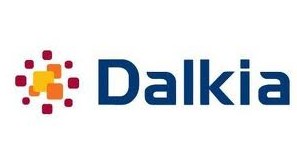 |
| Krakow, PolandPDF |
Modernization of the heat distribution systemSocial and economic transformation has strongly influenced local heat distributors. It gave opportunity for application of advanced technologies. The heat market grew in size and competitiveness, and concerns for the environmental increased. The company incorporated as strategic goals: improvement of networks and minimization of emissions. To ensure this, the company modernized heat distribution system and eliminated inefficient heat sources. Both the scope of completed projects and the outstanding results were only possible with engagement of third party funds. |
 |
Recognized with Certificate of Merit
|
||
| Barcelona, SpainPDF |
Renewable energy cooling & heatingin a green district Renovation of the citys south-western neighbourhoods implementing renewable energy cooling and heating solutions for building HVAC services. It derives its energy from a heating and cooling power plant utilizing renewable energy such as cooling sourced steam and a waste-to-energy heating source. It achieves reduction in greenhouse gases due to less fossil fuel consumption and the use of highly efficient machinery and also reduces the release of refrigerant gases into the atmosphere. |
 |
| Kreuzacker/Ellental in Bietigheim-Bissingen, Germany PDF |
Integrated energy concept for new housing areaAbout 1.200 apartments and terraced houses designed for low energy standard, supplied through an integrated energy concept which includes both reduced demand of heat and electricity and the use of renewable sources and efficient technologies for the generation of energy. The CO2-emissions of the housing area is close to zero and the heat prize for customers is less than from natural gas. |
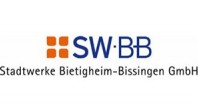 |
| Falun, SwedenPDF |
District heating networkThe network started 25 years with the use of waste heat from an industrial plant. After closure of the plant in 1993, it was replaced with a bio fuel-based CHP-plant. Network expansion continued and another bio fuel-based CHP plant was added. Municipalitys energy plan stipulates that district heating is preferable and that energy production shall be based on renewable fuel. In 2010 98% of heat in the district heating system will be based on biomass. A small district cooling system is also installed. The system has led to considerable reductions of CO2 emissions. |
 |
| Gothenburg, SwedenPDF 1 PDF 2 |
District energy systemDistrict heating was started in 1953. Since then the system has grown and reaches today 90% of all blockhouses and 20% of the houses and terraced houses in Gothenburg. The district heating is based on over 80% recycled energy that would otherwise be lost. In the past 36 years the district heating has reduced CO2-emissions by over 90%. The utility was early to offer energy service agreements and in that way help their customers to save energy. Since the mid-1990s district cooling has developed and has for the past few years been produced by a plant using free cooling from a river, supplemented by absorption cooling. |
 |
| Helsinki, FinlandPDF |
District heating and coolingMore than 90 per cent of the citys heating requirement is covered by district heating. District heat is produced by combined heat and power generation and is delivered to 93% of the buildings. The district heating network is expanded with more than 30 kilometres every year. District cooling load is 80 MW and the cooling is produces equally on heat pumps, absorption and free cooling. |
|
| Kristianstad, SwedenPDF |
District heating networkA small municipality owned energy utility that during the last 30 year has built up a substantial district energy operation. High efficient CHP solutions, close to 100%, and the overall system design give an outstanding positive environmental impact. The fuel mix in the system is today more than 99% based on renewable fuels, mostly forestry residues. Through competitive pricing, environmental profile as well as development of innovative price models and customer services, the market demand for district heat supply is continuously high. |
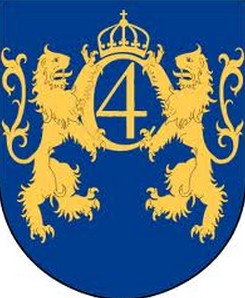 |
| Malmoe, SwedenPDF |
District Heating and Cooling SystemThe district heating system started in1951and has grown from smaller separate units into one large-scale system, and has grown as the city has expanded. The main fuels are industrial surplus heat, refuse incineration and high efficient CHP fuelled with natural gas. Approximately 65% of district heating supplied is renewable. Which has led to a decrease in CO2 emissions and less primary energy used compared with the past. A unique district energy system using of 100% locally renewable energy, such as solar, wind and water, has been established in part of the city. |
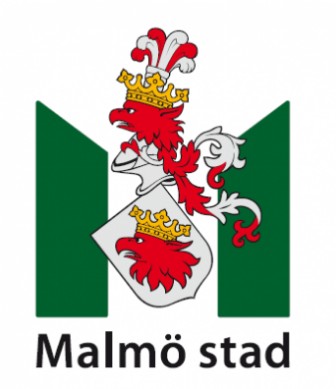 |
| Montpellier, FrancePDF |
Industrial & technology park cooling and heating networkTo increase the capacity of a server housing a facilities management was set up to carry out a true energy efficiency policy review, and to achieve overall savings in electricity, natural gas, and water consumption. Room air conditioning procedures were analyzed and seasonal heating and cooling needs were configured, temperature level reviewed and real-time monitoring of various users\’ needs was established. Results include elimination of natural gas consumption, a more than 85% reduction in the facilitys carbon footprint. |
 |
| Nancy, FrancePDF |
Renewables in district heatingDistrict heating grids were established in the 60ies. New contracts were negotiated in 2006 to ensure further expansion of the grid on the basis of competitive and sustainable supply: integration of renewable energies (wood chip boilers and high-efficiency waste-to-energy plant), provision of energy advice and services for building owners and users. Measures taken have created more than 100 new jobs, reduced CO2 emissions by 81%, and increased the share of renewable to 84% and to reduced customer bills by 22%. |
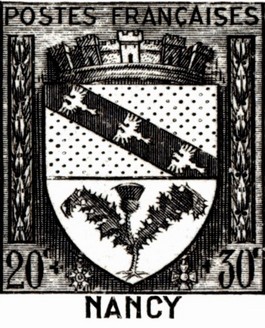 |
| Nyborg, DenmarkPDF |
District heating networkThe network supplies a middle size town with district heating obtained as waste heat from a chemical plant and a plant that disposes hazardous chemical waste by incineration. Biogas from a sewage treatment facility is also used as fuel. Within the area supplied with district heating, the market share is 99%. The utility also supplies heat in a neighbouring town with its own network. The two networks are to be joined into one. Results include reductions in the use of primary energy and emissions. |
 |
| Olomouc, Czech RepublicPDF |
City Energy Supply SystemA joint-venture which supplies more than 24,000 homes in the city with heat and domestic hot water. Between 1998 and 2009 the focus has been on connecting old coal and gas fired boiler rooms and houses and to the original, obsolete steam network with a new, safer and modern hot water network. The network has doubled to 100 km, with the hot water network accounting for more than half. The CHP plant has been modernized with new boilers and steam turbines. Increased efficiency as wall as reductions in CO2 and other emissions has been achieved. |
 |
| Paris, France PDF PDF |
Chilled water production and district networkUnder a public service concession a chilled water district network of seventy kilometres and with 290 MW of injected cooling power cools 475buildings. Every year 20 MW capacity is added. Apart from environmental and energy advantages, the district chilled water production plants centralize the consumption of resources for cooling under controlled circumstances. A further improvement has been the change from the traditional wet cooling towers to the use of river water. Results have been considerable with respect to savings in CO2 emissions and consumption of electricity and water. |
 |
| Poznan, PolandPDF |
A city heating systemThe system consists of a CHP plant and a 441 km heating network supplying more than 7.000 buildings, thereby covering more than half of heating demand in the city. Simultaneous heat, electric energy and ice water production enables the use of above 80% of energy contained in fuel. Further progress includes increased use of biomass to replace coal. Over 10 years more than 300 of its local coal resources have been eliminated and the existing gas and oil resources modernized. This has enabled significant reduction of CO2 emission, and almost complete elimination of SO2, soot and dust. |
 |
| Prague, Czech RepublicPDF |
District heating systemThe city wide system provides district heating to more than 200.000 households and numerous of other buildings, and has 3 CHP plants as sources of heat. Over the last 20 years the system has expanded both in the share of CHP in the heat supply as well as in the size of the network. It has eliminated many small boiler plants, and thereby improved local air quality. And further expansion and incorporation of other networks is taking place. Also waste incineration has contributed to the achievement of benefits such as reduction in traditional pollutants as well of CO2 emissions and use of energy. |
 |
| Solna & Sundbyberg, SwedenPDF |
Two cities cooperating in district heatingTwo district heating systems have been integrated and the use of oil has been fully replaced by bio fuels and heat pumps. The basic idea is to produce, distribute and sell district heating, district cooling and energy services to the 100.00 inhabitants in the area. More than 90% of the buildings in in the two districts, including multi family houses, industries, commercial buildings, schools, etc, are connected to the system, which also includes a district cooling system using free cooling from a lake. A low environmental impact with very low CO2 emission has been achieved. |
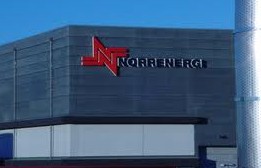 |
| St. Paul, Minnesota USAPDF |
District energyThe city and its building owners faced a major decision after the oil crises about how to secure a reliable energy source and stable prices. An ensuing collaborative effort gave birth to a community district energy system. It provides heating to more than 80% of the business district, with over 185 buildings and 300 single family homes. It also provides cooling to more than 60% of the business district. It meets most of the heating needs with renewable thermal energy from a biomass CHP plant. It has achieved considerable reductions in emissions of CO2 and also of SO2 and particulates. |
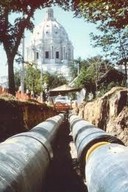 |
| Thisted, DenmarkPDF |
Waste, geothermal and strawThe district heating network supplies almost 5.000 consumers with district heating based mostly on waste incineration, with considerable contributions from geothermal heat and incineration of straw. The waste incinerator achieves efficiency of almost 93%, and both production facilities and distribution network are modern. A recently drawn op heat plan for the whole municipality aims at connecting a number of district heating systems to common transmission grid, thereby ensuring a large degree of supply reliability minimum usage of fossil fuels. |
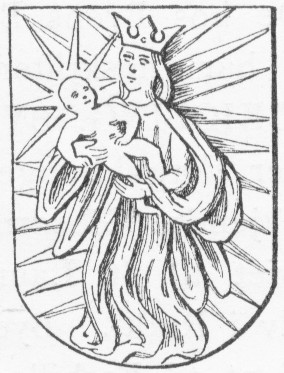 |
| Trebic, Czech RepublicPDF |
From block boilers to district heatingFrom originally a configuration with block boiler houses, house boilers and heat exchange stations, the citys heating supply has been stepwise converted into a centralised district heating supply network. 25 km of new distribution networks has been built and about 20 block boiler houses and 40 boiler rooms on natural gas have been closed down. Emphasis has been place on conversion of production facilities to multi-fuel use, and biomass is now the dominant fuel for a system that supplies almost 10.000 households, schools, commercial building etc with district heating. |
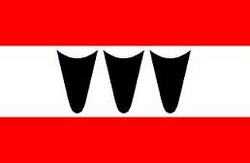 |
| Umeå, Sweden PDF |
A district heated city80% of the total indoor area in the city is heated by district heating and the figure continues to rise. The network is 350 km long, growing fast and has replaced thousands of oil boilers and reduced the amount of electricity used for heating. The district heating is complemented by a district cooling based on heat pumps and absorption refrigerators. The sources of heat are mainly bio fuels and waste whereas the input for district cooling is mainly heat pumps and absorption chillers. |
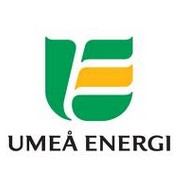 |
| Varberg, SwedenPDF |
Five systems in a municipalityOne major and four small district heating networks in a municipality with 56000 inhabitants supplies 7000 flats, more than 100 public and commercial buildings and almost 800 single family houses with district heating. More than 80% of the heat comes as industrial surplus heat and from biomass. The recycled heat and the biomass have to a great extent replaced natural gas, heating oil and electricity for heating. The benefits have been lower primary energy demand and lower CO2 emissions. Among future aims are to lower temperatures in network to facilitate use of lower temperature surplus heat. |
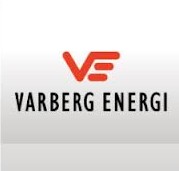 |
| Vienna, AustriaPDF |
Waste to heatThe system is built on the complementary needs for waste disposal and for heating. Waste incineration significantly contributes to the input of surplus heat that covers almost 96% of the heat needed in the district heating network. Further sources are CHP and industrial surplus. The district heating supplies almost 300.000 residential customers and 6.000 commercial building with heating, and has a market share of 37%. The goal for market share is a 50% share I 2015. Environmental benefits include lower CO2 emissions through fuel switch and higher efficiency. |
 |
